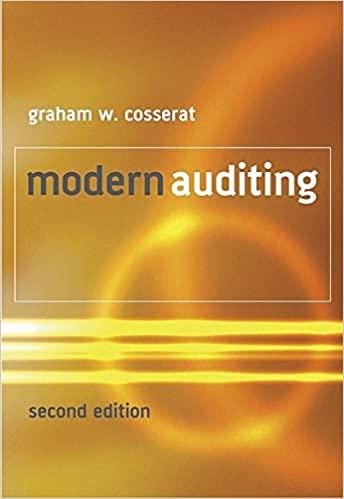Answered step by step
Verified Expert Solution
Question
1 Approved Answer
j16 For subsequent transactions no entry is required in the general ledger as these transactions do not affect the general ledger accounts. Accounting for Completed

j16 For subsequent transactions no entry is required in the general ledger as these transactions do not affect the general ledger accounts. Accounting for Completed Jobs Normally, in a job costing system when work on a job is com- pleted, it would be available for delivery to a customer. At the time of completion, all work-in- process account balances pertaining to that job are transferred directly to cost of goods sold account In case, production is made in anticipation of future sale, relevant costs from work-in-process will be transferred to the finished goods inventory account. The journal entries in the factory ledger would be as follows: 1. Production is as per order Debit Cost of Goods Sold A/c, and Credit Work-in-process Alc (Transfer of cost on completion of the job). 2. Production is for future sale (a) Debit Finished Goods Inventory A/c, and Credit Work-in-process Alc (b) At the time of sale Debit Costs of Goods Sold A/c, and Credit finished goods inventory. Accounting for Non-Manufacturing Costs Costs such as sales commissions, freight and delivery charges, can sometimes be related directly to particular jobs. Since these costs are incurred subse- quent to the completion of the job, they cannot be classified as the cost of production. They should be separately shown as the direct costs of selling, distributing, and servicing particular jobs in job cost sheets which can be modified to add non-manufacturing costs. This information is useful in estimating future job costs and in bidding on prices. We now illustrate the cost recording procedure in job costing with a comprehensive example. EXAMPLE 13.2 (Job Cosmina SUSTEM: FACTORY LEDGER AND GENERAL LEDGER METHOD) Jay Engineering Company Ltd uses a job-order cost system. The following is a summary of its operations during January: 1. Purchases of raw materials and supplies, 337,500. 2. Materials and supplies were requisitioned and issued as follows: Direct materials: Job No. 101 36,000 102 9,000 103 1,400 16,400 Indirect materials 400 3. Factory payroll sent to the general office for payment was distributed as follows: Direct labour. Job No. 101 35,400 102 6,000 103 600 12,000 Indirect labour 4,000 4. Indirect miscellaneous manufacturing costs incurred, 65,200. 5. Indirect manufacturing costs were applied using a rate of 70 per cent of direct labour cost. 6. Job No. 101 (100 units) and Job No. 102 (50 units) were completed and transferred to finished goods. 7. Goods despatched to customers were as follows: From Job No. 101, 50 units: From Job No. 102, 100 units. Prepare the required ledger accounts to record the above transactions in the factory ledger
Step by Step Solution
There are 3 Steps involved in it
Step: 1

Get Instant Access to Expert-Tailored Solutions
See step-by-step solutions with expert insights and AI powered tools for academic success
Step: 2

Step: 3

Ace Your Homework with AI
Get the answers you need in no time with our AI-driven, step-by-step assistance
Get Started


